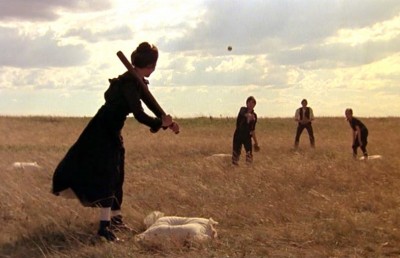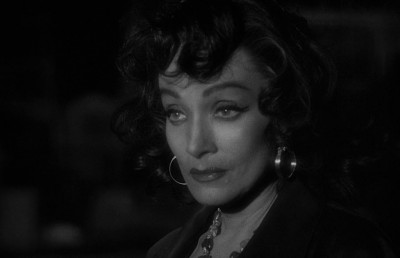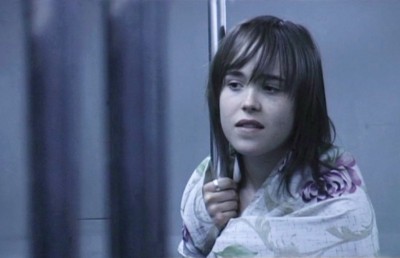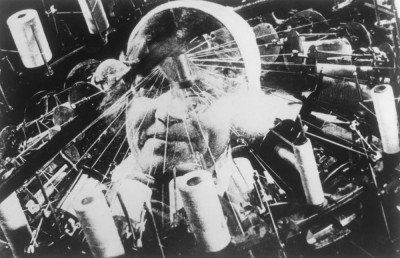Beautiful and Oppressive – Lyricism and Catholic Angst in Abel Ferrara’s Bad Lieutenant
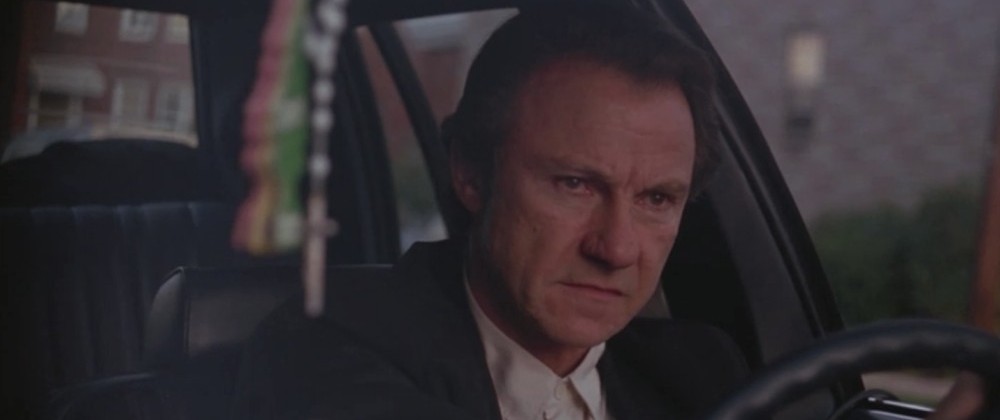
Lyric [lirik]: In the modern sense, any fairly short poem expressing the personal mood, feeling, or meditation of a single speaker (who may sometimes be an invented character, not the poet). … often suggests a song-like quality … the most usual emotions presented are those of love and grief. … Lyricism is the emotional or song-like quality, the lyrical property, of lyric poetry.
The Concise Oxford Dictionary of Literary Terms (Oxford University Press, 2001, 2004).
Bad Lieutenant (1992) is Abel Ferrara’s most polarizing picture, having brought him auteur status and critical apprehension in equal measure. Beginning his career with the exploitation flicks, Driller Killer (1979) and Ms. 45 (1981), Ferrara immediately gained a reputation as a director of low budget Grand Guignol, and saw his name associated with the dubious genre of the ‘video nasties.’ By the time of Bad Lieutenant, however, Ferrara must have been a reformed man in the cinema industry’s eyes, with glossy features like Cat Chaser (1989) behind him, successful television shows [1], and the critical and commercial kudos of King of New York (1990) still fresh in the memory. At this juncture in his career, he might reasonably have chosen to court Hollywood. It is typical of Ferrara that he instead chose to make his most challenging picture, in terms both of theme and aesthetic. Bad Lieutenant represents a vision of Catholicism after the manner of Graham Greene and Evelyn Waugh, in novels such as The End of the Affair (1951) and Brideshead Revisited (1945). In the film just as in those texts, Catholic faith is portrayed as something it’s possessors labour under, even deny, but which is finally too strong for them: something insistent and ultimately beautiful. In order to describe this vision, Ferrara employs a series of narrative tableaux interrelating the venal and the sacred, while simultaneously, the film’s predominantly naturalistic style is punctuated by and interchanged with passages of genuine lyricism, featuring significant use of lyrical devices, including narrative economy, music, and above all, refrain.
The critical response to Bad Lieutenant was largely positive, but most reviews focused their attention on Harvey Keitel. The New York Times, Chicago Sun-Times, and Hollywood Reporter, all lauded Keitel [2]. Desson Howe, in the Washington Post wrote that “there’s one thing to admire in Bad Lieutenant: Harvey Keitel’s courage.” Even as they admired Keitel’s extraordinary performance, reviewers seemed to have misgivings about the film as a whole. No one wrote of Ferrara’s courage. He was either damned with faint praise, or accused of actively courting controversy. Janet Maslin wrote dismissively in the New York Times, that Ferrara’s “appetite for sensationalism remains untempered.” Crucially, while most reviewers paid lip-service to the film’s theme of Catholic redemption, it was with more or less derision –Duane Byrge writing in the Hollywood Reporter that “it’s not exactly Saul on the Road to Damascus stuff.” It is hard to think of another film that might more appropriately be described as “Saul on the road to Damacus stuff.” The following excerpt is from an interview with Ferrara conducted by Manohla Dargis for ArtForum:
AF: In 1982, in Spanish Harlem, a nun was raped, period. That’s a true story. The church put up money, the mob put out money. Every cop in New York went after these guys, they caught them in ten minutes. Now I’m thinking, Why all of a sudden are they going apeshit over this chick?
MD: Because she’s a nun?
AF: But why? So what? Because she wears a penguin suit I’m supposed to get crazy? What about some 13-year-old that’s getting raped right now in the Bronx someplace, no one gives a shit about her.
MD: It’s because she belongs to the Church.
AF: Everyone belongs to the Church. If you really believe it.
MD: Not me.
AF: Well, you’re not the one to judge. The point is, if Jesus exists you don’t have a choice.
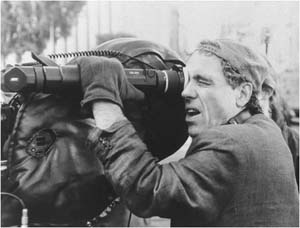
That is precisely the dichotomy that the titular and otherwise nameless central character of Bad Lieutenant wrestles with throughout the narrative. He is a drug-addicted detective, in thrall to gambling, sex and illegal activity. He is also a Catholic, even if he seems to see his Catholicism mainly as a bragging right: “No one can kill me,” he tells an admonishing bookmaker, “I’m blessed. I’m a fucking Catholic!” When a colleague reports the multiple rape of a nun in Spanish Harlem, for which a fifty thousand dollar reward has been offered, it is Ferrara’s very words that can be heard in the Lieutenant’s sardonic speech: “Girls get raped every day, now they’re gonna put up fifty gees just cos these chicks wear penguin suits.” It is only the reward on offer for the capture of the perpetrators that commands the Lieutenant’s attention. However, if his avowed indifference to the church is made clear, the mise-en-scene employed emphasizes the religious context of his criminal behaviour. In the opening scene, the Lieutenant, after dropping off his two sons at school, immediately snorts cocaine, his car parked right outside the school. A rosary hangs from the rear-view mirror in the foreground of shot. The standard set-up for this shot would have the camera situated in front of the driver’s seat, but instead, Ken Kelsch, the film’s cinematographer, chooses to place the camera in front of the passenger seat, so that the rosary is emphasized by being between the audience point-of-view and the Lieutenant as he liberally doses himself. In this way, the rosary is insisted on. He watches with a bitter grimace as a nun shepherds his two sons into the school. Similarly, in a later scene, the Lieutenant pulls over two underage girls driving their father’s car without permission. In exchange for letting them go he demands that one mimes oral sex, while the other shows him her behind, so he can masturbate at the elaborately choreographed spectacle. The girl nearest to him wears a large silver crucifix ring that twinkles provocatively in the street lights. Later, as he eavesdrops on the raped nun in order to glean some clues for the reward as she is questioned by his police colleagues, he is shown standing behind a corner, just around which is a statuette of the crucified Christ. Thus the Lieutenant looks like an irresolute sinner, unwilling to quite literally turn the corner. Later still, he places bets with his bookmaker at his daughter’s confirmation, as the priest repeatedly intones, “The body of Christ” at the Eucharist. The Lieutenant later returns to the church to again eavesdrop on the nun as she is at confession. He is shown lurking uncertainly outside the confessional like a recalcitrant choirboy. When he later snorts cocaine at home in the middle of the night, he uses his daughter’s confirmation photos to do so. Most significantly of all, when he collects his long-awaited drug money, it is given to him in a box with a crucifix on the lid, and decorated with icons of the Virgin Mary. It is this money of course that he will finally give to the two rapists –to facilitate their escape– rather than his murderous loan shark, thus ensuring his own redemptive death. So the Lieutenant’s debased behaviour is repeatedly situated within the locus of religious imagery. It is as if his offending is not so much in criminal law terms, as in a religious sense: he is offending God. Simon J. Taylor argues in the Journal of Religion and Film that this relentless imagery of the sacred is intended “to suggest an identification between Lt [the Lieutenant] and Christ,” but on the contrary, it is employed to underline the Lieutenant’s wilful determination not to allow religious faith into his life. He declares to his colleagues, “The church is a racket.”
The streets, so evocatively conjured by Ferrara and Kelsch, are where the Lieutenant feels safest, because he thinks he possesses the arcane knowledge necessary to thrive in that milieu, even as his life spirals out of control. The recurring narrative device of the pennant series between the New York Mets and the Los Angeles Dodgers baseball teams serves as a metaphor for the Lieutenant’s misapprehension. When the film begins, the Dodgers are three-to-zero up in the best-of-seven series, with their superstar slugger, Daryl Strawberry, dominating. It is this figure with whom the Lieutenant is identified rather than with Christ. He watches or listens with rapt attention whenever Strawberry is at the plate; his fortune waxes and wanes along with Strawberry’s; even his own wife refers to him archly as Strawberry. Strawberry represents the Lieutenant’s certainty in the primacy of the corporeal over the spiritual – “the Dodgers are a fucking lock!” he says with conviction twice during the film. He never believes that the Mets can come back from three-to-nil down, as that would require faith. He cajoles his colleagues into betting on the Mets only so that he can cover his own much larger bets on the Dodgers. The fact that the Mets do come back to win the series –thus plunging the Lieutenant into irredeemable debt, but paradoxically, also guiding him toward redemption– therefore represents a genuine case of Deus-ex-machina. Strawberry, the power-hitter’s ultimate failure to change the fated course of the series, represents the Lieutenant’s over-reliance on his own street-smarts. As Brian Grady neatly puts it in Bright Lights Film Journal, the Lieutenant, “consumed in spiritual crisis, continues to gamble his flesh on Strawberry, who represents its limits.” So when the Lieutenant listens on his car radio to Strawberry striking out, and flies into an uncontrollable rage, shooting the radio, and bellowing “You fucking nigger!” at the top of his voice, the audience can sense his sudden uncertainty and terror of the unknown. Towards the end of the film, the Lieutenant sits in a bar, drug-addled, barely conscious, watching the latest match in the series. He watches impassively as Strawberry is struck out on a check swing, shown a second time in slow motion, the image perfectly incapsulating the powerlessness of the seemingly strong flesh. As Ferrara tells Dargis in their interview, “The greatest performance in that film is Strawberry acting like he didn’t swing.”
If Bad Lieutenant??’s narrative strength lies in its metaphors and imagery, the emotional power of the Lieutenant’s self-abused road to Calvary can be found in the film’s lyricism. Reviewers were supercilious when commenting on the film’s style. Janet Maslin referred to the film’s “lively, low-down version of high style” and asked potential viewers to “imagine a Martin Scorsese who had chosen to make nothing but B movies”. Duane Byrge labelled it “sub-??Mean Streets reality.” Those failures to respond to the film’s formal sophistication probably arose from the entrenchment of Ferrara’s identification as a director of grittily realistic B-movies, and from an American tendency to undervalue cinematic naturalism itself, at least in their own film-makers. Not only is Bad Lieutenant most emphatically not a B-movie, there is nothing inherently limited or ugly about realism as a filmic style. Roberto Rossellini’s best films were predominantly naturalistic, but what could be more lyrically expressive than Germania Anno Zero (1948) or Paisa (1946)?
The term ‘lyricism’ is most often employed in the discussion of poetry. Lyric poems are characterized by economical, spare narratives –Japanese haiku being the most extreme example– and are usually of an ephemeral nature, appealing to the emotions rather than the intellect. This is reflected in Bad Lieutenant??’s sparse, elliptical narrative, and in it’s unrestrained appeal to the audience’s emotions. Perhaps the most emotive device in lyric poetry is the refrain. Refrain consists of repetition within the structure of the text –of a line, rhyme, verse or sound, in order to stimulate emotion in the reader. It is this poetical refrain that is so skilfully wrought in ??Bad Lieutenant. Most superficially, it is featured in the film’s repetitive narrative. The Lieutenant takes drugs –in his car, in cramped apartments, at home, and in hallways and stairwells. He eavesdrops on the nun on three separate occasions. He attends crime scenes, which he then attempts to exploit for personal or financial satisfaction: he ogles a homicide victim’s ample breast at one scene; at another he attempts to pocket the evidential package of cocaine at the scene; he pulls over the girl’s in their father’s car only so he can sexually exploit them; and he goes so far as to rob the robbers at a foiled hold-up. Before, during, or after these crime scenes, he places or takes bets with and from his bookmaker and colleagues respectively. And of course, he listens to or watches the pennant series unfold on radio and television. This single-minded narrative reiteration establishes the depths of the Lieutenant’s extrication in drug addiction, criminal behaviour, debt and general moral degradation, as well as the relentlessness of his quest for the spiritual abnegation he will ultimately be denied. Most poignantly, the film opens with him driving his two sons to the safe sanctuary of their school, and ends with him driving two other “young boys” to their own deliverance at his expense.
The film’s visual fabric also employs refrain in order to achieve it’s emotional impact. The frequent appearance of religious symbols has already been discussed, but the physical location of the Lieutenant’s behaviour is also demonstrative of his dilemma. As Tag Gallagher has recognized, if the Lieutenant finds himself increasingly oppressed by his growing faith, then “he is no freer in graphic terms.” He is often framed within constrictive spaces: in his car –where, with the camera occupying the passenger seat, there hardly seems room for the Lieutenant– in hallways and stairwells, where, in the scene when he has collected his drug money, the walls of the stairwell seem to close in on him; and in the cramped kitchen of his heroin supplier (played by script co-writer, Zoë Lund), where the black clothed junkie looms over him like a vampire. In these ways, the Lieutenant’s environment seems to encroach on him just as his spiralling addiction and debt increasingly impinge on his ability to function in his own terms: namely, in elaborately orchestrated criminality and wilful, self-protective denial of faith.
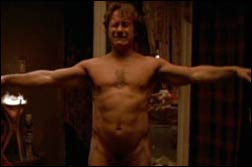
In aural terms as well, the film further utilizes refrain. The baseball commentaries that punctuate the film establish a sensual rapport between the audience and the Lieutenant as they share the same immersive soundscape. They also of course, quite literally comment on the Lieutenant’s impending destruction as the series plays it’s drama out at his expense. Musically, the film is predominantly spare in texture. Originally, the soundtrack was intended to feature the Schoolly D track, “Signifying Rapper” [3], but it had to be removed due to copyright issues. The resultant minimalism of the soundtrack, with only the ambient noise of the city featured during the bulk of the film, may have been something of a blessing, because that sparseness contrasts powerfully with the lush romanticism of the Johnnie Ace track, “Pledging My Love” [4] –itself spare and lyrical, being just two verses, each repeated once– which plays twice in the film, at moments of particular pathos. In the first instance, the Lieutenant, naked, sodden drunk and with two prostitutes for company, begins to cry as he briefly and uncharacteristically allows himself a moment of spiritual avowal, and makes the form of the cross. Finally, in the last two scenes, filmed at the Port Authority Bus Terminal and outside the Trump Plaza hotel, the haunting song plays again as the Lieutenant escorts the two rapists onto the bus, and then walks away from the camera/audience toward both his destruction and bizarre, but no less convincing, martyrdom.
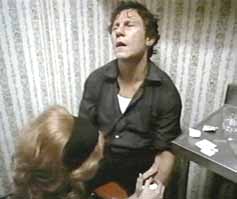
Ferrara’s favourite director is Pier Paolo Pasolini, “because he filmed his visions and did it without qualifications” (Petley). The same could be said of Ferrara himself and of Bad Lieutenant. One shot embodies the rigour with which the film is constructed. In only the film’s second scene, the Lieutenant attends a homicide. Two gun-shot victims sit in the front of a car. As the Lieutenant examines the victims, Ken Kelsch’s camera work mimics the Lieutenant’s gaze as it pans down silently, awfully, to ogle a shapely corpse’s blood spattered breast. The shot is so brief and understated that it takes a moment to register with the audience. Then they shift uncomfortably in their seats as they realise what has just occurred. They have just been immersed, and what’s more, implicated for a brief moment in the mind of a man who is seemingly irredeemably damned. This is uncompromising film-making. As Ferrara has observed, “once you’re an adult, then that’s it; anything within the scope of an artist’s imagination has got to be portrayed, and if you don’t like it then leave” (Petley). Ferrara’s extraordinary achievement is that, although Bad Lieutenant should be difficult to watch, he makes the film so lyrical, in it’s formal surface, and in it’s cumulative emotional effect, that it becomes a truly satisfying viewing experience. Watching the film it is impossible not to be reminded of Martin Scorsese’s best work of the seventies, which may be what caused Maslin and Bryge to mention Scorsese, albeit acerbically, in their reviews. Or perhaps, unconsciously, it was the Johnnie Ace song, employed so affectingly, that the Lieutenant dances to during the film, just as a younger, more idealistic Keitel character danced to it in Mean Streets (1973) nineteen years before: just one more poignant refrain in a film constructed of them. Given his love of Pasolini, Ferrara would no doubt have been gratified to read the film’s Variety review, in which Lawrence Cohn was one of the few to recognize that with Bad Lieutenant Ferrara had indeed become a “new standard bearer for Pasolini’s poetic realism.”
Endnotes
1 Miami Vice, two episodes (Abel Ferrara, 1985), Michael Mann Productions/Universal TV. Crime Story, Pilot Episode (Abel Ferrara, 1986), New World Television.
2 Consult bibliography for details of these reviews.
3 Schoolly D, Signifying Rapper (Jesse Bonds Weaver, Jr.), Jive Records / Zomba, 1988.
4 Johnnie Ace, Pledging My Love (Robey/Washington), Music Corporation of America, Inc., 1954.
Bibliography
Byrge, Duane. Hollywood Reporter. December 30, 1992.
Cohn, Lawrence. Variety. May 6, 1992.
Dargis, Manohla. “Malice toward nuns – motion picture director Abel Ferrara – Interview.” ArtForum. March, 1993.
Ebert, Roger. Chicago Sun-Times. January 22, 1993.
Gallagher, Tag. “Geometry of Force: Abel Ferrara and Simone Weil.” Screening the Past. Issue 10, 2000.
Grady, Brian. “Crack Christ, The Excess and the Ecstasy of Bad Lieutenant.” Bright Lights Film Journal. August 2006, Issue 53.
Greene, Graham. The End of the Affair. (London: Heinemann, 1951).
Howe, Desson. Washington Post. January 29, 1993.
Maslin, Janet. New York Times. November 20, 1992.
Petley, Julian. (accessed June 2, 2007)
Taylor, Simon J. “‘It all happens here:’ Locating Salvation in Abel Ferrara’s Bad Lieutenant.” Journal of Religion and Film. Vol. 7 No. 1 April 2003.
Waugh, Evelyn. Brideshead Revisited. (London: Chapman & Hall, 1945).


